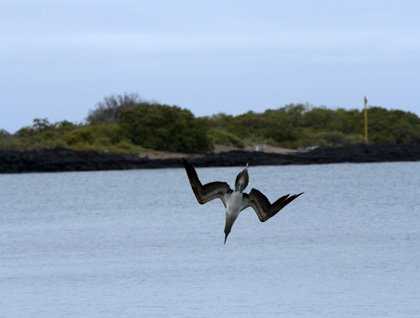Floreana, or Charles Island, located in the southern part of the archipelago, is one of the four inhabited islands and was the first one to be officially inhabited by Ecuadorians when Ecuador took possession of the islands in 1835. A penal colony that lasted for only a few years was settled there, and from then on the island’s colorful human history went from marooned whalers to prisoners and colonists, and from a toothless dentist to a self-proclaimed empress.
Nowadays the island is under a huge restoration project to re-establish its unique ecosystem and eventually reintroduce the endangered Floreana mockingbird and the Floreana giant tortoise, create a self-sufficient community, support the use of friendly energy alternatives, and create a sustainable ecotourism program.
Today our guests had the chance to learn about it and explore some of the national park visitor sites such as Punta Cormorant. We started our day with an early wet-landing at a site named Punta Cormorant, a fascinating beach of olivine sand. From here we took the inland trail along a large salt pond where a flamingo was feeding with some other shorebirds. The vegetation and unique landscape make the walk interesting before reaching a second beach of incredibly fine, white, coralline sand, which is also a favorite nesting site for Pacific green sea turtles.
Back aboard for breakfast, the ship was repositioned to a small offshore volcanic cone named Champion Islet. This is the only island where a small population of the Floreana mockingbird—which was driven to extinction by cats, rats, and other introduced predators on the main island—still exists. During our Zodiac rides we were able to see these elusive mockingbirds, as well as red-billed tropic birds nesting, hundreds of Galápagos shearwaters and of course dozens of sea lions, including a mother with its new baby. The rest of the morning was devoted to water activities, such as deep-water snorkeling and the glass bottom boat. Water was a little bit chilly but this is always a fantastic site with hundreds of fish, sea lions, white-tipped reef sharks and different species of sea urchins and sea stars.
Following lunch, we spent our afternoon visiting the famous Post Office Bay. Here a barrel is still used for an old mail swap tradition going back to whaling days. We went through the mail left at the barrel and our guests helped to keep the tradition alive by collecting some postcards to hand deliver back at home. After that we kept exploring the beautiful post office bay by kayak and by Zodiac rides.







